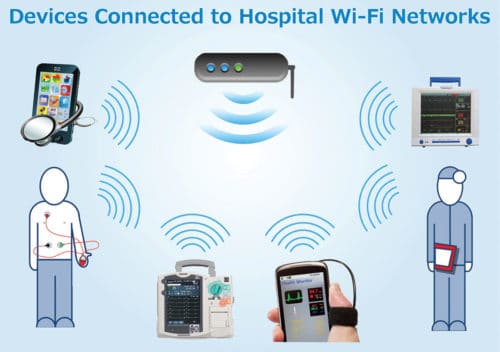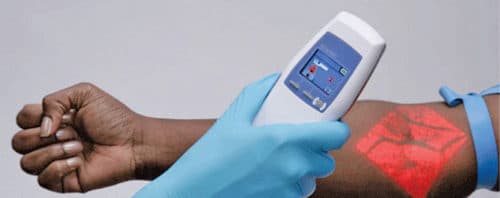Use of smartphones for patient care and disease management has led to some very exciting and useful medical innovations
In May 2016 India tabled an ambitious mHealth (Mobile Health) resolution at World Health Organization (WHO), which was supported by over 30 nations. This put India at the forefront of transition towards digital health. Setting up of National Digital Health Authority was another milestone that would help to achieve the stated goal.
The mHealth movement has come as a boon for patients confined to their hospital beds, where their heartbeat is continuously monitored via devices attached to them and displayed with beep sounds. Image this entire burdensome setup converted into a tiny, lightweight temporary body tattoo. The supposed tattoo has an embedded radio transmitter that would monitor and send the patient’s vital information to the doctor faster.
This developing field, called mHealth, uses mobile technologies for medical purposes. Use of smartphones for patient care and disease management is a simpler form of the same. Such applications of wireless technologies have led to some very exciting and useful medical innovations.

“Almost all medical devices are becoming connected to the Internet. This is giving users the freedom to utilise data from anywhere. We, as designers, try to ensure every device at least has the option to connect to the Internet,” shares Nitesh K. Jangir, co-founder, Coeo Labs.
Technology on the skin and beyond
Electronics technology is moving towards use inside the body and on the skin. Such technology is known as epidermal electronics. Medical applications for wireless technologies range from diagnostics and monitoring to therapeutics and imaging, and wellness and fitness.
Dr Megha Pruthi, pain management specialist at Venkateshwara Hospital, Delhi, explains health monitoring through wireless devices: “These devices are designed with special wireless sensors. Usually, the technology is patented by makers. The device is embedded in the patient’s body during the normal catheterisation procedure. Once embedded, it starts monitoring the patient’s vital signs and sending the relevant data to doctors as per the set frequency. In case of any problem, it sends alert messages on phones and emails. This helps to become well prepared to handle the exigency.”
Dr Gaurav Chanana, consultant physician, Delhi Pain Management Center, says, “Not just for patient care, wireless technologies are also contributing a great deal in research. Recently, Apple funded a research study run by a group of resident medical students and doctors at Stanford University that enabled real-time dialogue between the doctors and patients using Apple Watch. The same was promoted and encouraged by other doctors as well, and even became a rage on Twitter for a while. No doubt, tech giants like Google, Apple and Microsoft have penetrated deep into the medical system and profoundly transformed the way we take care of our patients.”

He adds, “Portable pacemakers have brought about a revolution in both the doctors’ and patients’ lives. These help us to save so many lives. Older patients often complain about being confined to the hospitals. Devices like these are a great rescue in such cases. Although the initial equipment costs are currently high in the market, I strongly believe that in a country like India, where not enough doctors are available to treat everywhere and all the time, adaptation of such technologies will lead to lower costs in a couple of years.”
Dr Surabhi Arora, consultant ophthalmologist, explains, “Often concerns are raised about data security. The technology provider assures us that it is highly encrypted, but patients still find it hard to trust. Trust is one of the biggest hindrances in the adaptation of these technologies. In the western world, companies like IBM and Microsoft have long been providing health assistance to hospitals, mostly through AI and other customer support facilities. Most of the results have been positive so far. In India, we are still in the very initial stages and have a long way to go.”
“Amazon has funded a cancer detection startup called Grail, while Apple has acquired a sleep tracking technology maker called Beddit. Most hospitals and patient care centres use Microsoft’s cloud platform to store and analyse their data. Such success stories provide a big boost for medical professionals, as it reinforces positivity in adopting the new developed unconventional path for treating patients,” shares Dr Surabhi.
Mentioning the use of augmented reality in vein visualisation, Paul Pickering says, “Venipuncture, the technique of puncturing a vein to draw blood or deliver an intravenous injection, is one of the most common medical procedures. However, there are extra challenges in case of some patients such as the elderly, burn victims, drug abusers and patients undergoing chemotherapy. Of the three million procedures performed daily in the US, an estimated 30 per cent require multiple attempts before finding a suitable vein.”“Augmented reality can help. USA-based AccuVein uses non-invasive infrared (IR) technology to scan the target site and display the underlying vein structure. Because hemoglobin in the blood absorbs more red light than the surrounding tissues, the resulting image shows veins as a web of black lines on a background of red,” he adds.
India’s medicare: On the high-tech route
Jangir shares, “Wireless technologies mainly being used are Wi-Fi, GSM and Bluetooth. So, while designing the boards, we ensure to integrate modules for these technologies. For instance, users are adopting ECG devices with Bluetooth connectivity to access ECG data through their phones.”
There are applications of Zigbee as well. Globally, use of Zigbee is quite widespread in medical equipment. In India, a handful of brands use Zigbee for medical equipment as their Wi-Fi is already occupied by other applications.
In addition to becoming wirelessly connected, many devices are turning portable. One good example is ultrasound devices.









